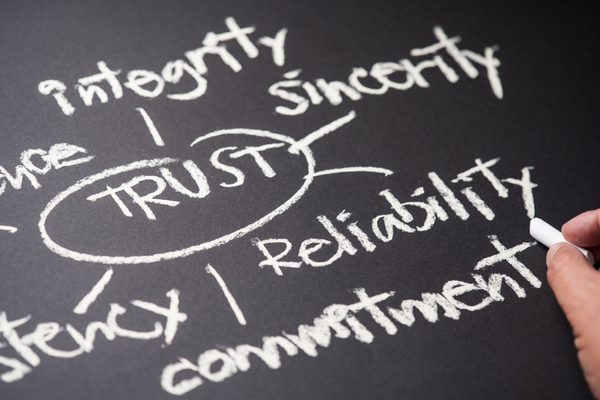Killing the traditional payslip - and other outdated tools
HR and finance teams are embracing digital transformation, yet many daily tools, from traditional payslips to spreadsheets, haven’t kept pace. PayFit’s Nicolas Kourilsky explores why these relics still linger and what a true digital refresh could deliver

Despite being the document most employees look at more than any other, the payslip has seen little change in decades. This lack of evolution - especially at a time where HR and finance functions are embracing automation and digital-first tools elsewhere - raises the question: are traditional static payslips, and other tools like it, still fit for purpose?
New research suggests not. When it comes to payslips, confusion among UK workers still lingers. According to a recent PayFit survey, nearly a quarter (24%) struggle to understand tax deductions, 19% find pension contributions confusing, and 18% are also concerned they’re unable to spot underpayments.
For businesses’ increasingly digital-first workforces, it’s clear the static payslip simply doesn’t meet their needs, with these gaps in understanding potentially leading to stalled financial decisions - such as applying for a mortgage, or figuring out if they can budget for a holiday - or even cause some to second-guess whether they’ve been paid correctly.
The knock-on effects for HR teams
The same issues that frustrate employees also create headaches for HR teams, who are then forced to spend hours decoding outdated formats and supporting those who are struggling to understand their payslips. In fact, according to the data, one in four British workers still need support at least once every quarter, an ongoing drain on HR resources that could be better spent elsewhere.
And that demand is only set to grow. With the Autumn Budget looming, employees are likely to have even more questions about their pay, especially considering the speculation around potential changes to pension policies, including reductions in the tax-free lump sum allowance, and discussions about introducing a flat rate of tax relief on pension contributions for all taxpayers.
What’s more, payslips are only part of the problem. Many historical HR and finance processes, like the humble spreadsheet, are still rooted in outdated systems, generally designed for very large companies with very heavy processes. When smaller businesses (which typically need greater agility) use tools such as these, they struggle to keep up.
Take performance management as an example. Large enterprise software providers that are historically focused on large corporations offer various tools for tracking an employee’s career path. But their evaluation and performance systems can lack the flexibility required from smaller businesses that want to adopt a culture of continuous feedback.
Many find the development tracking processes (skills, internal mobility) are still too rigid, based on fairly static job descriptions, and the employee experience is often fragmented across different modules, such as onboarding, training/development discussions, and performance reviews.
There’s also the issue of maintaining these tools. Their content can be costly to maintain, and consequently become outdated, leading to a drop in adoption and triggering more questions to HR. Digital and AI-enhanced tools can help by reducing maintenance overhead, allowing HR to redirect their bandwidth toward more strategic, value-added activities.
On the other hand, smaller organisations try to patch these gaps by using multiple digital tools, but this only multiplies logins, costs, and admin work.
Why a digital refresh is needed
These may sound like major pain points in both employees’ and HR managers’ daily lives; but, with the right tools, they’re also some of the simplest to solve.
With payslips, for example, employers need to make them clearer, more intuitive, and easier to navigate, which will help workers make better financial decisions. Interactive payslips, which include features such as clickable definitions, are an easy and simple upgrade that can provide employees with a better understanding of their payroll, in turn empowering them to make smarter financial decisions and free HR to focus on more meaningful work.
Beyond the payslip, areas such as financial planning and analysis also highlight the need for a digital refresh. Excel or traditional EPM solutions can struggle with scalability, errors from manual data entry, and offer limited collaboration for complex, multi-department processes.
Alternative modern platforms are able to overcome these limitations by standardising data, enabling multi-dimensional analysis, and providing much greater capacity without lag. They make financial planning, analysis, and management more agile, collaborative and reliable, while facilitating adoption and centralising data.
Whether we’re talking about understanding a payslip or streamlining financial planning, ultimately, a digital refresh across HR and finance isn’t just about efficiency - it’s about clarity, empowerment, and trust. The tools we rely on every day should make work easier, not harder.
Nicolas Kourilsky is Chief People Officer at PayFit
Main image courtesy of iStockPhoto.com and AndreyPopov

Business Reporter Team
Most Viewed
Winston House, 3rd Floor, Units 306-309, 2-4 Dollis Park, London, N3 1HF
23-29 Hendon Lane, London, N3 1RT
020 8349 4363
© 2025, Lyonsdown Limited. Business Reporter® is a registered trademark of Lyonsdown Ltd. VAT registration number: 830519543





